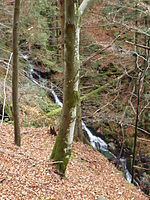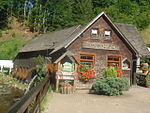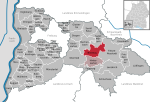Abbey of St. Märgen

The Abbey of St. Märgen (German: Kloster St. Märgen) is a former Augustinian canons monastery in St. Märgen in the Black Forest in Germany, which was founded around 1118 under the name Cella Sanctae Mariae ("Chapel of St. Mary"). The German form of the name, Maria-Zell, changed over the centuries through Marienzell, Sante Merien and St. Mergen to the present name of the abbey and village, St. Märgen. The Baroque abbey church of St. Mary of the Assumption (Mariä Himmelfahrt) is today the Roman Catholic parish church of St. Märgen and one of the most important Marian pilgrimage churches in the Archdiocese of Freiburg.The history of the abbey has been researched in depth, especially by church historian Wolfgang Müller (1905–1983), the priest and art historian Manfred Hermann, the teacher and historian, Elisabeth Irtenkauf (born 1931 in Rottweil) and St. Märgen's sexton and local historian, Klaus Hog (born 1966 in Freiburg im Breisgau). The abbey was destroyed five times by fire, the first time in 1284 or shortly before and the last time in 1907. It was rebuilt or restored five times. In art history it has a special significance because one of the most important rococo woodcarvers in southern Germany, Matthias Faller, lived and worked here for a while.
Excerpt from the Wikipedia article Abbey of St. Märgen (License: CC BY-SA 3.0, Authors, Images).Abbey of St. Märgen
Kirchplatz, GVV St. Peter
Geographical coordinates (GPS) Address Nearby Places Show on map
Geographical coordinates (GPS)
| Latitude | Longitude |
|---|---|
| N 48.0062 ° | E 8.09215 ° |
Address
Klosterkirche
Kirchplatz 1
79274 GVV St. Peter
Baden-Württemberg, Germany
Open on Google Maps











